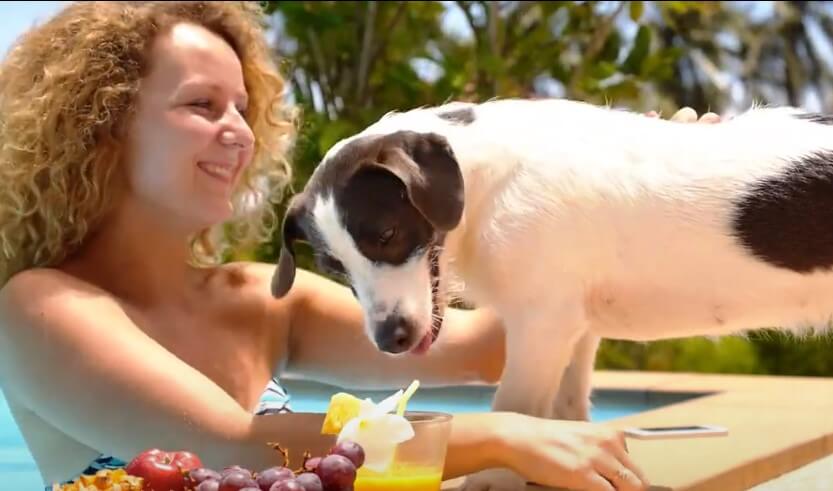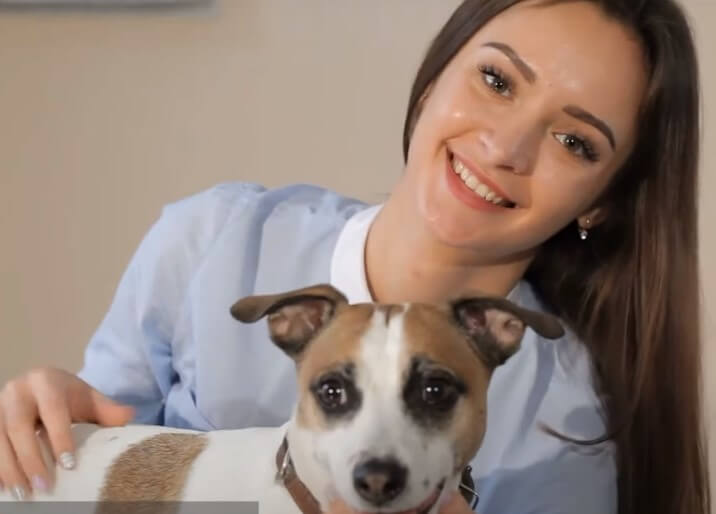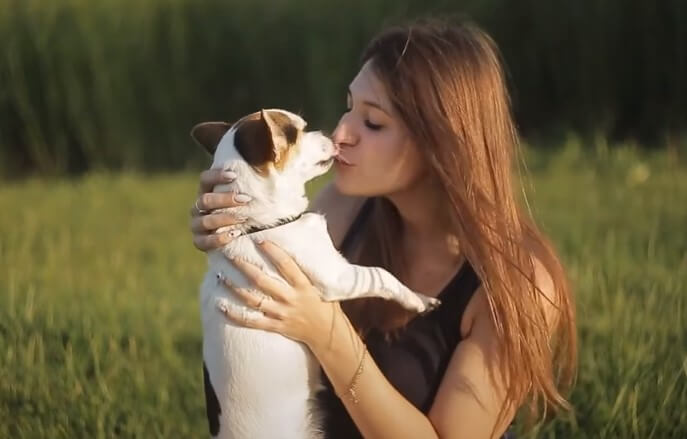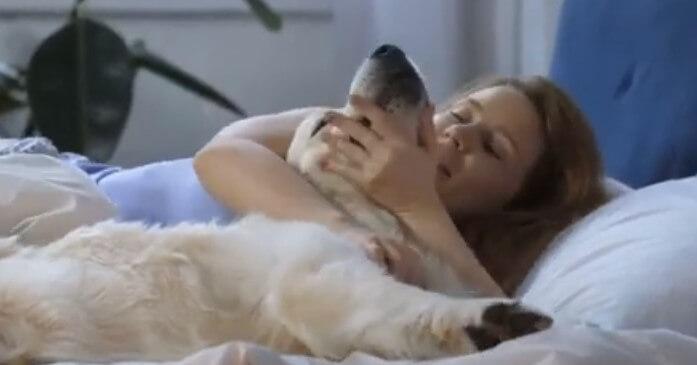How To catch a dog that runs away from you, use treats or toys to lure it back towards you. if you’ve ever experienced the frustration of a dog running away from you, you know how important it is to act quickly and effectively.
It can be a nerve-wracking experience, but with the right strategies, you can safely and successfully catch your runaway pup. Whether you’re dealing with a stubborn escape artist or a frightened dog in an unfamiliar environment, understanding how to approach and catch a runaway dog is crucial.
In this article, we will explore some practical tips and techniques that can help you bring your furry friend back to safety. By using positive reinforcement methods and calmly managing the situation, you can increase your chances of a successful retrieval and ensure your dog’s well-being.
Understanding The Behavior Of A Runaway Dog
It can be a stressful and worrying experience when your beloved furry friend decides to take off and run away.
Understanding why your dog may exhibit this behavior is key to preventing it from happening in the future. Dogs are instinctual creatures with an inherent desire to explore their surroundings.
Just like humans, they can become curious and eager to discover new smells, sights, and sounds. Let’s delve deeper into the common reasons why dogs run away and the instinctual nature that drives them.
Recognizing Common Reasons Why Dogs Run Away
There are various factors that can lead to a dog running away. By being aware of these reasons, you can better prepare and prevent such situations in the future. Here are some common factors that may contribute to a dog’s tendency to run away:
- Curiosity: Dogs are naturally curious animals and have a strong urge to investigate their surroundings. If something catches their attention, they may feel compelled to explore, often leading them away from their familiar environments.
- Boredom and lack of stimulation: Dogs that don’t receive sufficient mental and physical stimulation may easily become bored. This boredom can drive them to seek excitement elsewhere, potentially resulting in running away.
- Fear and anxiety: Dogs that experience fear and anxiety may resort to running away as a means of escape. Loud noises, unfamiliar environments, or traumatic experiences can trigger these emotions and lead to the instinctual response of fleeing.
- Lack of proper training and socialization: Dogs that lack proper training and socialization may not understand boundaries and may be prone to wandering off. It’s important to provide them with obedience training and expose them to various situations to help them feel more secure and less likely to run away.
- Hormonal influences: Unneutered dogs, particularly males, may be driven by their hormones to explore beyond their usual territories in search of potential mates. Spaying or neutering your dog can help alleviate some of these instincts.
Understanding the behavior of a runaway dog is crucial in effectively addressing and preventing such situations.
By recognizing the common reasons why dogs run away, you can implement appropriate measures to keep your furry companion safe and secure.
Next, we will explore practical strategies to help you catch a runaway dog and bring them back home.
Creating A Safe And Secure Environment
Having a dog that constantly runs away can be a source of frustration and worry for pet owners.
It’s important to take proactive measures to ensure the safety and security of your dog in your home and yard.

By implementing some simple strategies, you can create an environment that greatly reduces the risk of your dog escaping.
Here are some key points to consider:
Securing Your Yard To Prevent Escape
- Install a sturdy fence around your yard: A solid fence is the first line of defense in preventing your dog from running away. Choose a fence that is high enough so your dog cannot jump over it and opt for materials that cannot be easily dug under or chewed through.
- Regularly inspect and maintain your fence: Regularly check your fence for any holes, loose boards, or weak spots. Repair or replace any damaged sections promptly to ensure that your dog cannot find any potential escape routes.
- Consider reinforcing the bottom of your fence: If you have a small or determined dog, consider adding an extra layer of protection by installing a barrier at the bottom of your fence. This can be achieved by attaching chicken wire or concrete blocks to prevent digging or squeezing through.
- Utilize secure gates: Ensure that your gates are secure and functioning properly. Use sturdy locks or padlocks to prevent unintentional openings or unauthorized access.
- Keep potential escape routes blocked: Take a walk around your yard and identify any potential escape routes such as loose boards, gaps in the fence, or objects that your dog could use to assist in climbing over. Block or fix these areas to eliminate any opportunities for your dog to escape.
- Supervise outdoor activities: Whenever your dog is outside, make sure to keep a close eye on them. Dogs with a history of running away should never be left unattended in the yard as this increases the risk of escape.
Creating a safe and secure environment for your dog is paramount in preventing escapes.
By following these guidelines and ensuring that your yard is properly secured, you can significantly reduce the likelihood of your dog running away and enhance their overall safety and well-being.
Developing A Strong Bond With Your Dog
Building a bond of trust and establishing a strong relationship with your dog is essential for both their safety and your peace of mind.
When a dog runs away from you, it can be a sign that they lack trust and connection with you.
By taking the time to build a solid bond, you can minimize the chances of your furry friend taking flight in the first place. Here are some key points to keep in mind:
- Spend quality time together: Carve out regular time to engage and interact with your dog. This can be through play sessions, walks, or simply cuddling on the couch. The more time you invest in your dog, the stronger your bond will become.
- Practice positive reinforcement: Rewards and praise are powerful tools when it comes to training your dog. Positive reinforcement rewards good behavior and helps your dog understand what is expected of them. This encourages a positive bond between you and your furry friend.
- Use consistency in training: Consistency is key when training your dog. By establishing clear rules and boundaries, you can create a sense of stability and trust. Consistent training methods allow your dog to understand what is expected of them, reducing their inclination to run away.
- Be patient and understanding: Building a strong bond takes time and patience. Remember that each dog is unique and may require different approaches. Be patient with your furry companion and always approach training and bonding with understanding and empathy.
- Seek professional help if needed: If your dog consistently runs away or displays challenging behavior, don’t hesitate to seek guidance from a professional dog trainer or behaviorist. They can provide expert advice tailored to your specific situation, helping you overcome any hurdles and further strengthen your bond.
By investing time, patience, and positive reinforcement in developing a strong bond with your dog, you can create a loving and trustworthy relationship.
This bond will not only reduce the chances of your dog running away but also enhance the overall quality of your lives together.
How To Catch A Dog That Runs Away From You
It can be a frustrating and worrying situation when your dog decides to make a run for it whenever you’re out for a walk or in an open space. But fear not, there are several techniques you can use to catch a dog that runs away from you.
These techniques are not only effective but also ensure the safety of your furry friend.
Technique 1: Using A Long Leash For Controlled Freedom:
- The benefits of using a long leash:
- Allows your dog to have some freedom while still under your control
- Provides a sense of security and prevents your dog from running too far away
- Helps in establishing boundaries and teaching recall commands
- How to properly use a long leash for training:
- Attach the long leash to your dog’s collar or harness
- Give your dog enough slack to explore but not so much that they can bolt away
- Practice recall commands while using the long leash to reinforce obedience
Technique 2: Practicing Recall Training:
- Establishing a solid recall command:
- Choose a specific word or phrase to use as your recall command (e.g., “come” or “here”)
- Start in a distraction-free environment and gradually increase the level of distractions
- Use a positive and enthusiastic tone to encourage your dog to come to you
- Using rewards and positive reinforcement during training:
- Reward your dog with treats or praise when they come to you after being called
- Use high-value treats to make the recall command more enticing
- Consistently reinforce the recall command to strengthen the behavior
Technique 3: Creating A Strong Foundation In Basic Obedience:
- Teaching essential commands like “sit,” “stay,” and “come”:
- Start with basic obedience commands to establish control and communication with your dog
- Practice these commands regularly in different environments and situations
- Gradually increase the difficulty level of obedience exercises to build reliability
- Building consistency and reliability in obedience training:
- Use positive reinforcement techniques, such as treats and praise, to reward good behavior
- Consistency is key; reinforce the same commands and rules consistently
- Be patient and persistent with your training efforts to achieve long-term obedience
Technique 4: Utilizing Scent Training To Your Advantage:
- Incorporating scent cues to attract your dog’s attention:
- Use familiar scents, such as your scent or your dog’s favorite toy, to grab their attention
- Train your dog to associate the scent with positive experiences, like treats or playtime
- Teaching your dog to follow specific scents to find you:
- Gradually introduce scent trails for your dog to follow during training
- Pair the scent trails with the recall command to reinforce the behavior
- Practice scent training in various environments to generalize the behavior
Technique 5: Using Treats And Food As Bait:
- Choosing high-value treats to attract your dog:
- Find treats that your dog loves and considers highly rewarding
- Use these treats as bait to lure your dog back to you when they start running away
- Incorporating food rewards into training exercises:
- Use treats strategically during recall training to motivate your dog
- Reward your dog immediately when they come to you or respond to your recall command
- Gradually reduce the reliance on treats as your dog becomes more reliable in their obedience
By implementing these foolproof techniques and diligently practicing training exercises, you can significantly improve your chances of catching a dog that runs away from you.

Remember, patience, consistency, and positive reinforcement are essential for successful training outcomes. Happy dog catching!
Preventing Future Escapes
Have you ever experienced the heart-sinking moment when your dog manages to escape from your grasp and runs off into the distance?
It can be an incredibly stressful and worrisome situation. But fear not, because there are ways to prevent this from happening again in the future.
By identifying the potential triggers for escape behavior and implementing preventative measures, you can ensure that your furry friend stays safe and sound by your side.
So let’s dive into the key points that will help you in your quest to catch a dog that runs away from you.
Identifying Potential Triggers For Escape Behavior
- Fear and anxiety: Dogs may attempt to escape when they are fearful or anxious. Identifying and addressing the underlying causes of their distress is crucial in preventing future escapes.
- Boredom and lack of mental stimulation: Dogs that are bored or not provided with enough mental stimulation may resort to running away in search of excitement. Ensuring that your dog gets regular exercise and mental enrichment can help prevent escape attempts.
- Desire for social interaction: Some dogs may escape because they are seeking social interaction with other dogs or humans. Providing ample opportunities for socialization and playtime can reduce the likelihood of escape behavior.
Implementing Preventative Measures To Avoid Future Escapes
- Secure your yard: Ensuring that your yard is escape-proof is essential. Regularly inspect fences and gates for any potential weaknesses or gaps that your dog could exploit. Consider installing additional measures such as dig barriers or electronic fences to further deter escape attempts.
- Use appropriate restraints: When taking your dog for walks or outings, always use a sturdy leash and harness or collar that fits properly. Avoid using retractable leashes that give your dog too much freedom.
- Train recall reliably: Teaching your dog a reliable recall command is crucial in preventing escapes. Use positive reinforcement techniques to train your dog to come when called consistently. Practice the recall command in various environments and gradually increase distractions.
- Provide mental and physical stimulation: Ensure that your dog’s physical and mental needs are met by providing daily exercise, engaging toys, and interactive play. A tired and stimulated dog is less likely to feel the urge to escape.
- Address underlying behavioral issues: If your dog has a history of escape behavior, it may be a sign of underlying behavioral issues that need to be addressed. Consult with a professional dog trainer or behaviorist to develop a behavior modification plan tailored to your dog’s specific needs.
By being proactive and implementing these preventative measures, you can significantly reduce the chances of your dog escaping in the future.

Remember to address any underlying triggers for escape behavior and provide your canine companion with the physical and mental stimulation they need to thrive.
With patience, consistency, and proper training, you can turn a runaway dog into a loyal and contented companion.
Frequently Asked Questions
How Can I Prevent My Dog From Running Away?
To prevent your dog from running away, make sure it is properly trained on basic commands, such as recall. Create a secure outdoor space, use a leash or harness during walks, and ensure your dog receives enough mental and physical stimulation to reduce the desire to roam.
What Should I Do If My Dog Runs Away?
If your dog runs away, act quickly by searching the surrounding area on foot. Use treats, toys, or familiar scents to attract your dog back to you. Notify local shelters, vets, and neighbors, and consider utilizing social media and lost dog websites to spread the word of your missing pet.
Can I Train My Dog To Come When Called?
Absolutely! To train your dog to come when called, start in a quiet, distraction-free environment and use a clear and consistent command, such as “come. ” Reward your dog with treats, praise, and affection each time it responds correctly. Gradually increase the difficulty and practice in different locations and situations.

Conclusion
When trying to catch a dog that runs away from you, it is important to remain calm and approach the situation with patience and understanding. Start by creating a positive and safe environment for the dog to feel comfortable in, using treats and toys as incentives.
Utilize effective and strategic techniques such as using a long leash or a secure enclosure to gradually gain the dog’s trust and prevent further escaping. Remember to enlist the help of others, as teamwork can greatly increase the chances of successfully capturing the runaway pup.
Additionally, consider consulting a professional trainer or behaviorist for expert guidance if needed. With dedication, consistency, and a well-thought-out plan, you can ultimately bring your wandering four-legged friend back home safely.
Don’t lose hope, and always keep in mind that every dog is unique, so your approach may require some adjustments.
Stay positive, and good luck in your dog-catching endeavors!
Visit Other Post:
Why Does My Dog Knead His Blanket
Why is My Dog Bigger Than His Parents
- Smelly House Because of Dog? Take These Hygiene Tips - May 20, 2025
- How to Introduce a Dog To a Cats Without Chaos - May 6, 2025
- 4 Best Cavapoo Rescues in the UK 2024 - April 5, 2024








